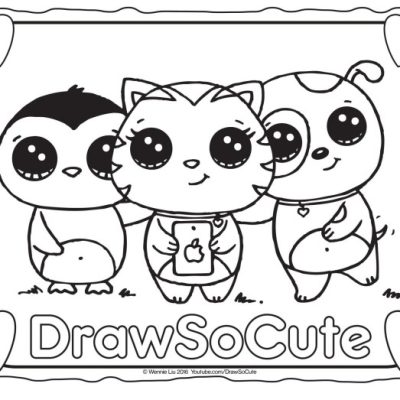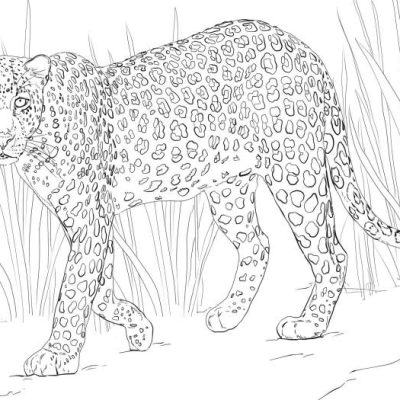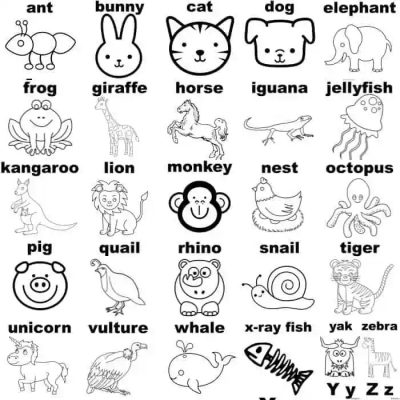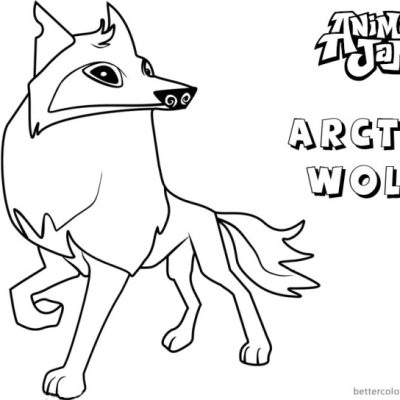Coloring Pages of Alphabets with Animals

Target Audience Analysis

Coloring pages of alphabets with animals – Coloring pages featuring alphabets and animals are designed to engage young children in a fun and educational activity. Understanding the target audience is crucial for creating appealing and developmentally appropriate designs. This analysis focuses on the age range, interests, and preferences of this demographic to inform the creation of effective and engaging coloring pages.The primary target audience for alphabet animal coloring pages consists of preschool and early elementary school children, generally ranging in age from 3 to 7 years old.
This age group is characterized by a rapid development of fine motor skills, cognitive abilities, and an increasing understanding of the world around them. They are highly receptive to visual learning and enjoy activities that combine play with learning.
Age Range and Developmental Stages, Coloring pages of alphabets with animals
Children aged 3-7 years old are in crucial developmental stages. Three-year-olds are typically mastering basic motor skills like holding a crayon and making simple strokes. Four- and five-year-olds are developing more complex motor control and hand-eye coordination, allowing them to create more detailed drawings. By ages six and seven, many children demonstrate increased precision and can copy more intricate shapes and designs.
This progression directly impacts the complexity of designs appropriate for coloring pages within this age range. Simpler designs with large areas for coloring are suitable for younger children, while more detailed illustrations are better suited for older children in this group.
Interests and Preferred Color Palettes
Children in this age group are fascinated by animals and bright, vibrant colors. Animals such as cats, dogs, elephants, and farm animals are particularly popular. They often respond well to bold, primary colors (red, yellow, blue) and their combinations (orange, green, purple). Pastel shades can also be appealing, particularly for slightly older children within this age range.
The use of these colors can be seen in many popular children’s books and toys, reflecting the preferences of this target audience. For instance, a coloring page featuring a bright red firetruck with a friendly dalmatian dog would likely be highly appealing to a child in this age group.
Artistic Styles
The preferred artistic style for coloring pages aimed at this age group should be simple, clear, and easily identifiable. Cartoonish styles with large, friendly-looking animals are generally well-received. Thick Artikels are important for younger children to easily stay within the lines, while older children might appreciate slightly more detailed designs. Avoid overly intricate or complex designs, as these can be frustrating for children to color and may detract from the enjoyment of the activity.
A simple, friendly illustration of an A for Alligator, for example, with clear lines and large spaces to color would be more effective than a highly detailed, realistic depiction of the same animal.
Little Timmy loved coloring pages of alphabets with animals; a playful ‘A’ for alligator, a cheerful ‘B’ for bear! His creativity soared when he discovered a fantastic resource for coloring animal face masks , which inspired him to add masks to his alphabet animals, creating even more whimsical designs. Back to his alphabet pages, Timmy now added lion masks to his ‘L’s and monkey masks to his ‘M’s, transforming his simple alphabet into a vibrant jungle adventure.
Design and Layout Considerations

Creating engaging coloring pages requires careful consideration of design and layout. A well-designed page is visually appealing, easy to color, and age-appropriate. The goal is to make the coloring experience enjoyable and stimulating for the child. This involves thoughtful choices regarding layout, color palette, and the use of negative space.
Effective layout ensures that the main subject, in this case, the animal and letter combination, is clearly presented and doesn’t feel cramped or cluttered. The use of white space, or negative space, is crucial in creating a visually balanced and appealing design. A clear hierarchy of elements is essential, making sure the letter and animal are prominent and easy to identify.
Example Layouts for Alphabet Coloring Pages
Below are three example layouts for a single alphabet coloring page, using a responsive two-column design implemented with HTML tables. These layouts demonstrate different approaches to arranging the letter and animal illustration.
|
Layout 1: The letter is positioned at the top of the page, followed by the animal illustration below. This layout is simple and straightforward. |
|
Layout 2: The letter is cleverly integrated into the design of the animal, becoming part of the animal’s form. This approach requires more creative design work but can create a more visually interesting page. |
|
Layout 3: The letter and animal are placed side-by-side, allowing for equal visual weight to both elements. This is a balanced approach suitable for various animal and letter combinations. |
Design of “A” and Alligator Coloring Page
This coloring page features a vibrant, friendly alligator and a large, uppercase “A”.
The “A” is designed with bold, simple lines, creating a large, easily colorable shape. The alligator’s body is positioned to partially incorporate the “A” – its head and front legs form the top part of the “A”, while its tail curves along the bottom stroke. The alligator is depicted with large, friendly eyes and a slightly open mouth showing a few simple teeth.
Its scales are represented by small, simple shapes that are easy for children to fill in with color. The overall color palette is bright and cheerful, using shades of green for the alligator, with pops of yellow and orange for details like its eyes and claws. The background is kept simple, perhaps with a light blue sky or a sunny yellow field to enhance the vibrancy of the main characters.
The lines are thick enough to be easily visible and followed by small hands but thin enough to avoid overwhelming the design.
Negative Space and Visual Balance in Coloring Page Design
Negative space, or the empty space around the main elements, is crucial in creating a visually balanced and engaging coloring page. It prevents the design from feeling cluttered and allows the eye to rest. In the “A” and alligator design, negative space is strategically used to create a sense of openness and clarity. The background is simple, allowing the alligator and letter to stand out.
The space around the alligator and the “A” is not overly crowded, creating a balanced composition and a more enjoyable coloring experience. Visual balance is achieved by considering the size, placement, and weight of the letter and animal. In this case, the large “A” balances the alligator’s form. The overall design aims for a symmetrical balance, creating a sense of harmony and visual appeal.
A well-balanced design feels stable and inviting to color.
Animal Selection and Representation: Coloring Pages Of Alphabets With Animals

Choosing the right animals for our alphabet coloring pages is a balancing act! We need creatures that are both visually engaging for kids and relatively simple to draw, avoiding anything too complex or requiring fine motor skills beyond a preschooler’s capabilities. We also need to be mindful of accurate representation and steer clear of any potentially harmful stereotypes.The challenge lies in finding that sweet spot where educational value meets artistic feasibility.
Some animals, while fascinating, might be too intricate for little hands to color. Others, while simple to draw, might lack the visual appeal to keep children interested. The key is careful consideration of both the animal’s characteristics and its suitability for a coloring page design.
Animal List and Stylistic Choices
Creating a visually appealing and educational alphabet book requires careful animal selection. Below is a list of 26 animals, one for each letter, keeping in mind both accurate representation and ease of drawing for children. The stylistic choice for the illustrations will be a cheerful, cartoonish style, emphasizing simple shapes and bold Artikels, making them accessible and enjoyable for young children to color.
This approach avoids overly detailed realism, which could be frustrating for children to replicate.
- A
-Anteater: A long-snouted anteater with easily drawn, simple shapes. - B
-Bear: A friendly, round-bellied bear, perhaps a panda for easier coloring. - C
-Cat: A classic, playful kitten with large eyes and simple features. - D
-Dog: A cheerful puppy with floppy ears and a wagging tail. - E
-Elephant: A simplified elephant with large, rounded ears and a trunk. - F
-Fox: A cute, cartoonish fox with a bushy tail and bright eyes. - G
-Giraffe: A tall giraffe with a long neck and easily identifiable spots. - H
-Hippopotamus: A friendly hippo with a wide, smiling mouth. - I
-Iguana: A vibrant iguana with easily recognizable scales and a long tail. - J
-Jackal: A stylized jackal with pointed ears and a sly expression. - K
-Kangaroo: A hopping kangaroo with a large pouch and strong legs. - L
-Lion: A majestic lion with a simple mane and expressive eyes. - M
-Monkey: A playful monkey swinging from a branch, with exaggerated features. - N
-Narwhal: A narwhal with a distinctive spiraled tusk. - O
-Owl: A wise owl with large, round eyes and feathery wings. - P
-Penguin: A waddling penguin with a charmingly simple design. - Q
-Quetzal: A brightly colored quetzal with a long tail feather. - R
-Rabbit: A fluffy rabbit with long ears and a twitching nose. - S
-Seal: A playful seal balancing on a ball. - T
-Tiger: A striped tiger with bold markings and simple features. - U
-Unicorn: A magical unicorn with a single spiraled horn. - V
-Vulture: A stylized vulture with a bald head and sharp beak. - W
-Whale: A friendly whale spouting water from its blowhole. - X
-Xenopus (African Clawed Frog): A simplified frog with large, round eyes. - Y
-Yak: A fluffy yak with long horns and a shaggy coat. - Z
-Zebra: A striped zebra with easily recognizable markings.










